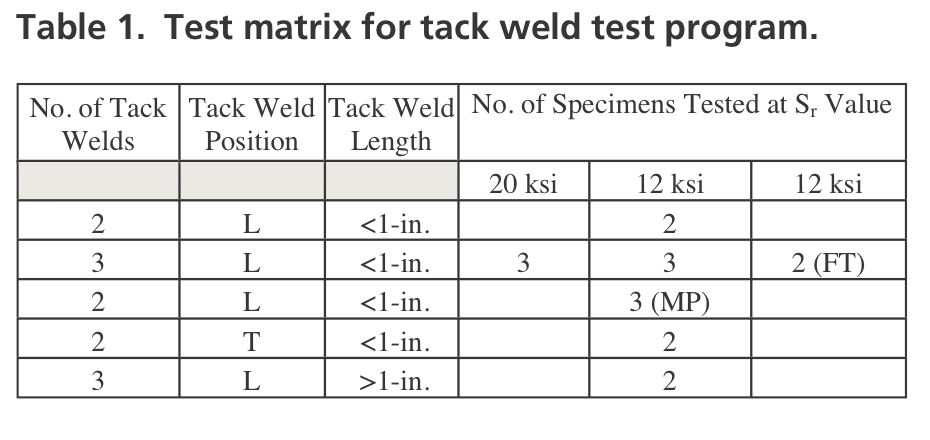NATIONAL COOPERATIVE HIGHWAY RESEARCH PROGRAM
Chapter 1: Background
Optimal performance of a bridge under normal service loads is essential for full and effective use by the motoring public. Problems that occur as a result of excessive deflections, deteriorating deck conditions, or fatigue cracking of steel girders or beams under normal operating service loads can cause delays and inconvenience for the public as these problems are being corrected. In extreme cases, inadequate serviceability performance may require that portions of a bridge be closed as it is being repaired, or the bridge may need to be replaced altogether. Moreover, repair operations also pose a safety hazard for both the motoring public and the construction personnel. Clearly, the need exists to develop modern and effective methods to assess the serviceability of a bridge structure so that the optimal performance can be achieved.
This research project has a focus on Section 7 “Fatigue Evaluation of Steel Bridges” in AASHTO’s The Manual for Bridge Evaluation (MBE) Second Edition issued in 2011. The MBE combines the Manual for Condition Evaluation of Bridges, Second Edition (2000) and its 2001 and 2003 Interim Revisions with the Guide Manual for Condition Evaluation and Load and Resistance Factor Rating (LRFR) of Highway Bridges, First Edition and its 2005 Interim Revisions. The objective of this research is to develop a revised and updated Section 7 for the MBE, to meet the needs of the user.
A view exists among some fatigue evaluation engineers that the MBE is overly conservative because some bridges with satisfactory service history are accordingly determined to have negative remaining fatigue lives. A number of factors may have contributed to this conservatism: overestimated load distribution factors, unintended composite action ignored, the S-N curve’s lower bound being used, etc. On the other hand, not all cases of fatigue evaluation are believed to be overly conservative. For example, truss or two-girder bridges carrying more than one lane of traffic may have unconservative fatigue life estimate because of the single lane loading prescribed in the MBE. When multiple lanes are carried by the two trusses or girders, the fatigue life may be significantly overestimated because possible simultaneous loads on other lanes are ignored. On the other hand, conventional analysis methods generally overestimate the live load stress ranges in truss bridges because unintended composite actions are often ignored.
In general, a larger amount of uncertainty is involved in fatigue evaluations compared with bridge strength evaluations or load ratings. Furthermore, the demand for a realistic fatigue evaluation is much higher than that for a fatigue design because an over-conservative evaluation result could cost considerably more than an over-conservative design. An unconservative result is, of course, not desired either. Besides the uncertainty factors mentioned herein, there are also other sources of uncertainty in the fatigue evaluation process. They include the scatter nature of the S-N curves, variable truck loads (including significant site-to-site variation), approximations in structural analysis or load effect estimation, etc. The inherent uncertainties, however, can be reduced using more refined analyses or field measurements to better define the stress range at the details in question.
Read full report (PDF) here: Fatigue Evaluation of Steel Bridges
About the National Cooperative Highway Research Program
www.trb.org/NCHRP/
“The National Cooperative Highway Research Program (NCHRP) conducts research in problem areas that affect highway planning, design, construction, operation, and maintenance nationwide.”
Tags: Fatigue Evaluation, Steel Bridges, TRB







 RSS Feed
RSS Feed